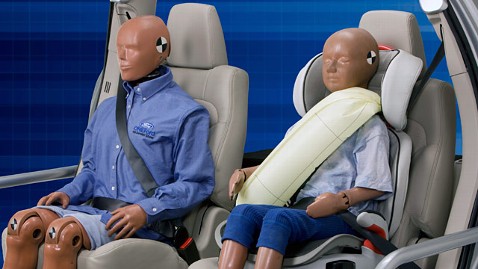By ABC News
Daniel Clark
@TheDanielClark
Follow on Twitter

Image credit: WENN
For the first time in seven years, fatalities on the nation’s roads went up 5 percent in the first half of 2012, according to the National Safety Council.
For teenagers ages 16 and 17, the results were even more staggering, with a 19 percent increase in deaths and 240 youngsters killed over the same time period, according to the Governors Highway Safety Association.
So why are highway deaths on the rise?
With more than 320 million cell phones in America, distracted driving is one guess. In an effort to cut down on distracted driving, lawmakers have responded, with 10 states banning talking on hand-held devices and 39 states banning texting while driving, according to the Insurance Institute for Highway Safety.
Experts from both the NSC and the GHSA say the reason for the spike is that we are driving more because of the improving economy and good weather. A better economy means more money for gas and more big rigs making deliveries.
But with the average age of a car on the road being 11 years old, many have kept their old cars that may not have the latest, safety technology.
“Certainly, a base model today is probably much more safe, or safer than a mid-level vehicle five years ago,” Jonathon Linkov, Managing Editor & Data Supervisor Autos for Consumer Reports, told ABC News.
For a closer look at the latest safety features designed to save your life, ABC News traveled to the Consumer Reports test track in rural Connecticut.
One Mercedes-Benz model can detect whether or not the driver is exhibiting signs of drowsiness.
The feature detects if you swerve or make moves to stay awake, and alerts you, even telling you where the closest coffee shop is.
With families in mind, Ford is installing inflatable seat belts in the back seats of some of its models. Think of it as an airbag for your kids in booster seats. In an accident, the inflatable seat belt disperses crash energy over five times more area of the body than traditional seat belts, according to a claim on Ford’s website. They are designed to provide additional protection for children and older passengers, who can be more vulnerable to head, chest and neck injuries.
One of the simplest contributors to accidents that can be fixed easily is proper tire inflation. Since 2007, the National Highway Traffic Safety Administration has required all new passenger cars to come standard with a tire pressure monitoring system. A new feature from Nissan tells you when you’ve put enough air in the tire by emitting three quick beeps.
Consumer Reports hopes such technology to keep us safe will become standard on more vehicles soon.
“We don’t want to see safety be something you have to make a decision with your wallet,” said Linkov. “We want safety to be something you can get at an easy price point, making it safety for everybody.”
Source : abcnews[dot]go[dot]com
No comments:
Post a Comment